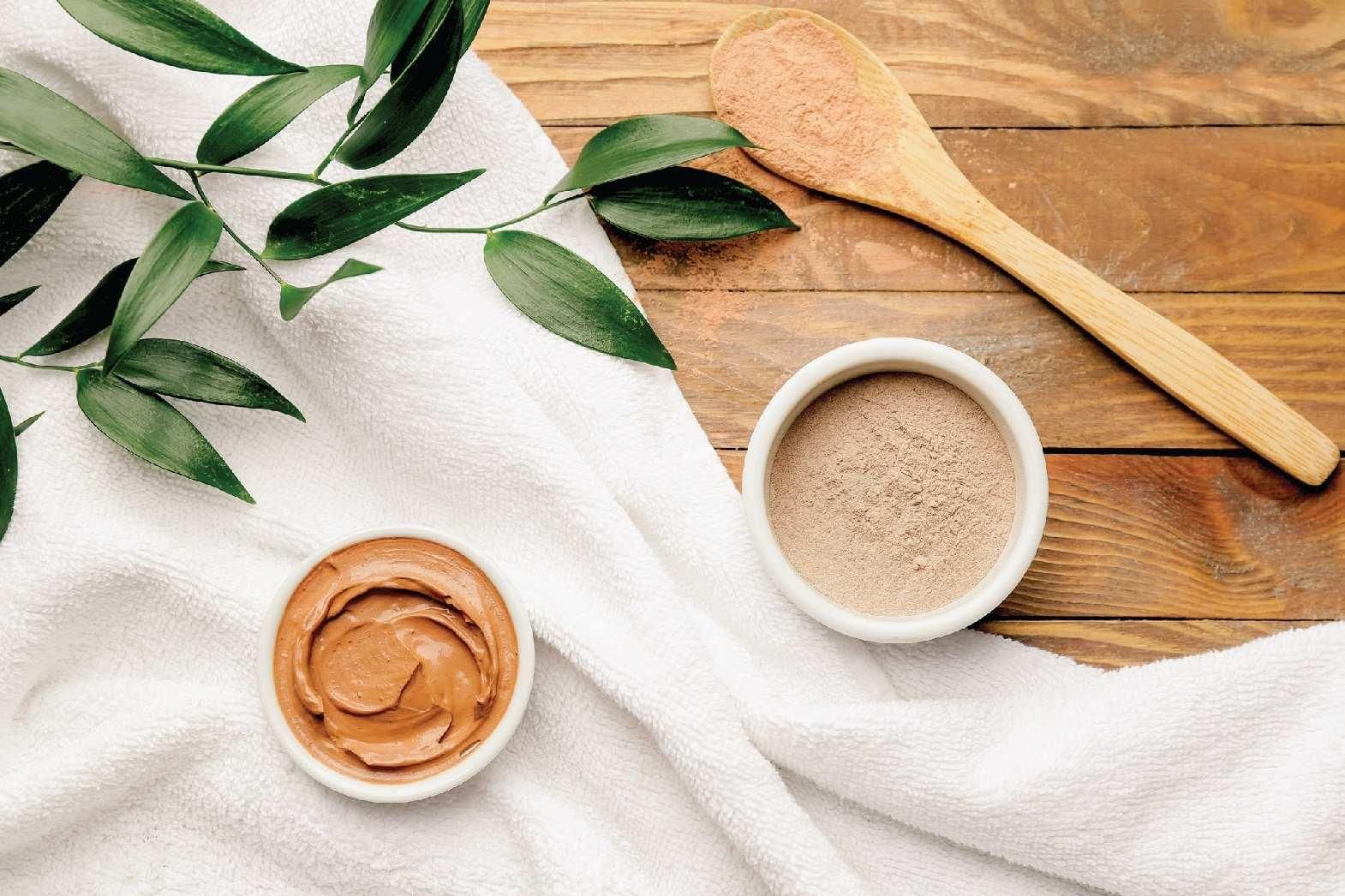Textiles are an integral part of human life, worn as clothing during the day and used as bed linen at night. While primarily designed for protection, warmth, and support, many modern textiles on the market also claim to possess various cosmetic benefits, such as moisturising, slimming, energising, refreshing, relaxing, or vitalising effects. These textiles, which incorporate cosmetic properties, are known as cosmetotextiles.
Cosmetotextiles are treated with a coating that includes solid microcapsules, each containing a specific quantity of a cosmetic substance. These substances are designed to be released directly onto the human body. The release mechanism in these microcapsules is usually triggered by impact, often from friction or pressure when the textile comes into contact with the body. This breaks the capsules, releasing the cosmetic properties. These innovative textiles offer an alternative for individuals who may have difficulties using traditional cosmetic products.1
History of Cosmetotextiles
Historically, textiles have been used to deliver health benefits through a concept known as Ayurvastra. This involved using organic cotton imbued with specific herbs and oils to promote health and aid in disease treatment. Following the coronavirus pandemic, there has been a renewed interest in textiles designed for hygiene maintenance. This includes textiles with bactericidal properties, insecticidal curtains, bed linens that release essential oils, and fabrics that emit fragrances through active molecules. These particles feature a nano-helical structure with a hydrophilic nano-cavity and a hydrophobic inner wall, allowing them to hold various active molecules that perform multiple functions.
Functional Effects
Traditionally, cosmetotextiles had limited resistance to washing, but advances in technology are enhancing their durability through repeated washes. New chemical compounds and innovative fixation methods are being developed. These technologies enable the fibres to be replenished with particles and active substances once they have been depleted. The process of reloading involves either spraying or adding a single dose of the active substance during the final washing step.2 Cosmetotextiles can deliver a variety of beneficial effects:
Firmness and Elasticity of Skin: These textiles release natural products that can soothe the skin, thus improving its firmness and elasticity. An example includes Padina Pavonica, derived from the protective coating of brown algae found in the Mediterranean Sea, known to enhance these skin qualities.
Body Slimming: Both men and women globally seek a slim body structure. Compression garments offer the possibility of slimming, reducing muscle damage, and maintaining muscle function. By accelerating blood flow in the veins, these garments enhance muscle appearance and provide a visually appealing effect.
Skin Moisturising: Squalane, a major lipid component extracted from sources like olive oil, creates a barrier on the skin to prevent water loss, keeping it soft and supple. With its ability to form hydrogen bonds with water molecules, squalane also reduces wrinkles and fine lines. Textiles impregnated with squalane can deliver it in a controlled way, and the integration of titanium dioxide (TiO2) can enhance moisture absorption through photocatalytic processes, making these textiles ideal for quick-drying sports or outdoor clothing.
Refreshing and Relaxing: During summer, the sensation of coolness contributes to refreshment and relaxation. This can be achieved using phase change materials in microcapsules or by increasing the contact area between the skin and high moisture-transmitting fibrous surfaces. Skintex Supercool is an example of such a commercially available cosmetotextile, featuring a seamless micro-denier polyamide/elastane structure to increase body contact.
Revitalising: Textiles that release revitalising aromas from plant and fruit-based ingredients like ginger, menthol, orange, and rosemary at a slow rate fall into this category. These ingredients are typically added using microencapsulation techniques, making these textiles ideal for bathrobes and similar items.
Perfuming: Cosmetotextiles designed for perfuming absorb foul odours and release pleasant scents. Ingredients such as chitosan, acetyl-glucosamine, D-glucosamide, and various essential oils including clove, jasmine, lavender, hyssop, sandalwood, rose, and frankincense are used for their perfuming effects.
UV Protection: Prolonged exposure to ultraviolet radiation can cause skin damage including sunburn, premature ageing, allergies, and even skin cancer. Textiles that protect against UV radiation typically depend on the type of weave, fabric density, and stretchability. Additives like zinc (Zn) nanoparticles, TiO2, and carbon black enhance the UV protection factor (UPF) of these textiles.
Manufacturing
Manufacturing of Cosmetotextiles involves several methods to integrate cosmetic ingredients3 into textiles:
Inserting Additives into Fibre: During the production phase, active agents are incorporated into the material used to form fibres. This process, known as dope preparation, happens before the fibres are extruded. Additives such as carbon nanotubes, Zn nanoparticles, and TiO2 can be used to create fibres with inherent properties like conductivity, UV absorption, and de-clustering.
Grafting Chemical Components: Ingredients such as cyclodextrin (CD) are chemically bonded to the surfaces of fibres, yarns, and fabrics to impart desired cosmetic effects. Following successful grafting, substances like benzoic acid, vanillin, and iodine can be applied to the CD-grafted fabric.
Coating on Textile: Textiles, such as bed linen, can be coated with various substances to enhance comfort and health. These coatings might include essential oils, antibacterial agents, anti-dust chemicals, and anti-mite treatments.
Microencapsulation Technique: This technique is used to extend the life of both volatile and non-volatile cosmetic ingredients by slowing down their oxidation and evaporation. Microcapsules containing these ingredients can be attached to the textile substrate using two primary methods: covalent grafting with a skin-friendly binder, or the exhaust method, which demands precise control over temperature and pH levels.
Certification
Certification for Cosmetotextiles involves adhering to specific regulations to ensure their safety and efficacy for consumers4, as stipulated by the European Union under the Cosmetic Regulation (EC) No 1223/2009 and relevant textile regulations:
Safety
-
Conducting a toxicological assessment of the cosmetic formula, capsules, and binders.
-
Undertaking clinical research, including an assessment of the irritancy potential of the product (via patch tests).
-
Performing dermatological studies to identify any potentially hazardous residues that could be absorbed through the skin.
Efficacy
-
Evaluating care resistance by measuring the concentration of the cosmetic product after a specified number of care cycles.
-
Ensuring conformity with the Cosmetic Regulation of Good Manufacturing Practices (ISO 22716).
Skin Assessment
-
Determining the Effective Dose (ED50) of compounds and their ability to inhibit radicals in the skin layer.
-
Assessing skin permeability both through in vitro percutaneous absorption and in vivo methodologies.
-
Measuring the antioxidant and antiradical capacity in the dermis, epidermis, and stratum corneum (SC).
Future Scope
The future of textiles in promoting holistic health is a rapidly evolving trend. Intelligent and smart technologies that integrate cosmetics into textiles are paving the way for innovative applications, such as skincare through clothing. Moving forward, wellness finishes are expected to play a crucial role in developing value-added products that can stand out in a competitive, barrier-free market where customer expectations continue to rise daily. The cosmetotextile industry, a fast-growing sector, sees collaboration across different industries to meet the global demand for well-being through natural and eco-friendly resources. While it currently represents a niche market, the development of new applications could open up significant opportunities in the apparel and home-furnishing segments.


 (1)20240730094415.jpg)







Comments